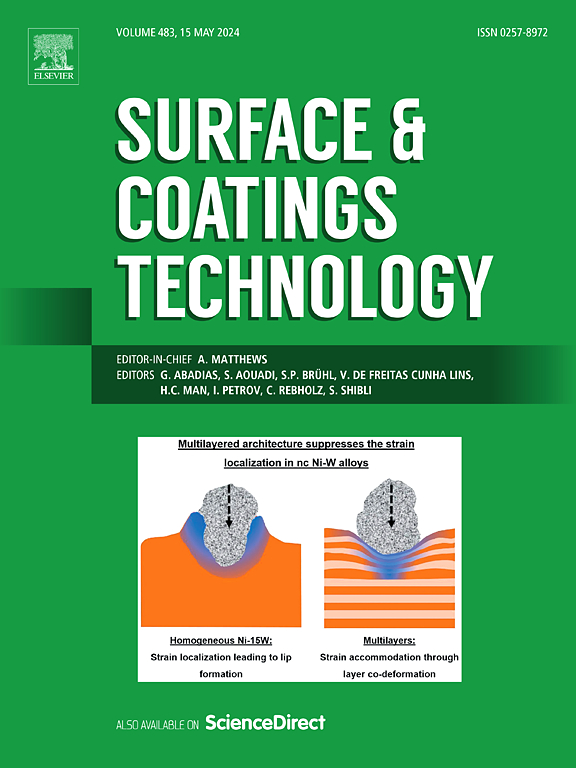Effect of sintering temperature on microstructure, phase evolution, thermo-mechanical properties of spark plasma sintering of NiTi alloy
IF 5.3
2区 材料科学
Q1 MATERIALS SCIENCE, COATINGS & FILMS
引用次数: 0
Abstract
This study examines the significant effects of sintering temperatures on the microstructure and the thermal, mechanical, and dynamic mechanical properties of NiTi alloys. The compaction of polycrystalline Ni50Ti50 (at.%) powders via spark plasma sintering (SPS) at various temperatures. The starting powder, with a particle size of 20 to 63 μm, was compacted at a fixed pressure of 50 MPa. Our findings indicate that the consolidated alloy exhibits stable phases of NiTi, such as austenite and martensite, at different sintering temperatures. Notably, both compactness and hardness improve as the sintering temperature increases. Higher temperatures lead to decreased porosity, resulting in a denser structure with a chemical composition of Ni47.1Ti52.9 (at.%). The grain size distribution also narrows with increased temperatures, highlighting microstructural evolution. Moreover, the samples displayed remarkable shape memory behavior and exceptional thermo-mechanical properties, achieving a maximum compactness of 99.8 % at 1150 °C. This research thoroughly investigates the influence of sintering temperature on microstructural characteristics, phase transformations, and shape memory behavior, underscoring the potential of NiTi alloys for various applications.
求助全文
约1分钟内获得全文
求助全文
来源期刊

Surface & Coatings Technology
工程技术-材料科学:膜
CiteScore
10.00
自引率
11.10%
发文量
921
审稿时长
19 days
期刊介绍:
Surface and Coatings Technology is an international archival journal publishing scientific papers on significant developments in surface and interface engineering to modify and improve the surface properties of materials for protection in demanding contact conditions or aggressive environments, or for enhanced functional performance. Contributions range from original scientific articles concerned with fundamental and applied aspects of research or direct applications of metallic, inorganic, organic and composite coatings, to invited reviews of current technology in specific areas. Papers submitted to this journal are expected to be in line with the following aspects in processes, and properties/performance:
A. Processes: Physical and chemical vapour deposition techniques, thermal and plasma spraying, surface modification by directed energy techniques such as ion, electron and laser beams, thermo-chemical treatment, wet chemical and electrochemical processes such as plating, sol-gel coating, anodization, plasma electrolytic oxidation, etc., but excluding painting.
B. Properties/performance: friction performance, wear resistance (e.g., abrasion, erosion, fretting, etc), corrosion and oxidation resistance, thermal protection, diffusion resistance, hydrophilicity/hydrophobicity, and properties relevant to smart materials behaviour and enhanced multifunctional performance for environmental, energy and medical applications, but excluding device aspects.
 求助内容:
求助内容: 应助结果提醒方式:
应助结果提醒方式:


